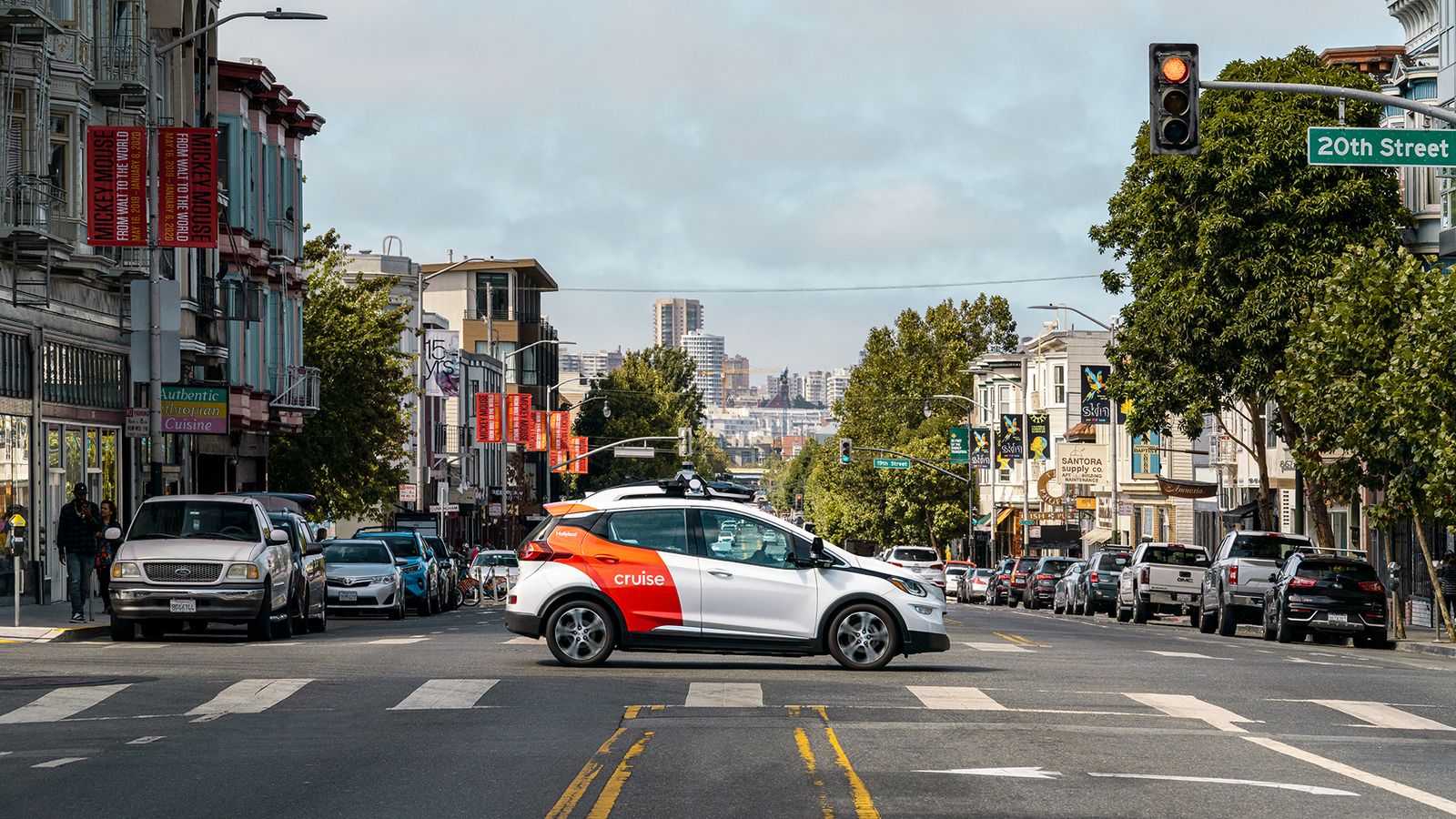A video which has gone viral shows a driverless car start to pull away after being stopped by police, at least initially – raising questions about how authorities can handle autonomous vehicles.
The car, owned and operated by a company called Cruise in San Francisco, is based on a Chevy Bolt chassis – although the company plans to launch a completely original vehicle soon.
After police pull over the car, the video shows an officer walking up to the car door – appearing to be surprised to discover it has no driver – and then unsuccessfully attempting to open it.
After failing, he begins to walk back to his car, but the autonomous Cruise vehicle – which is allowed to drive at night in the city – zooms off in what initially looks like a getaway attempt.
However the car quickly turns its hazard lights on and then pulls in to a safer spot just down the road. The video shows the police following before stopping.
In a statement on Twitter the company said: “Our AV yielded to the police vehicle, then pulled over to the nearest safe location for the traffic stop, as intended. An officer contacted Cruise personnel and no citation was issued.”
“We work closely with the San Francisco Police Department (SFPD) on how to interact with our vehicles, including a dedicated phone number for them to call in situations like this,” the company added.
Elon Musk U-turns on joining Twitter board after becoming firm’s largest shareholder
Frontline police not taught what evidence they can get from tech companies, training documents reveal
Elon Musk suggests changes to Twitter’s subscription service, including cutting price and dogecoin payment
SFPD has not issued a comment.
The trial in San Francisco comes ahead of completely self-driving cars being tested on the roads of the UK.
The Law Commission of England and Wales, and the Scottish Law Commission, want legal protections to be introduced for owners of self-driving cars if anything goes wrong with the automation.
However, whoever is in the driver’s seat should still be responsible for things like insurance and children wearing seatbelts, the commissions said.
It is not clear how police in Britain could interact with a driverless car to ensure these forms of road safety compliance.
Two years ago a modified version of the Nissan LEAF completed the UK’s longest autonomous car journey by driving itself the 230 miles from Cranfield in Bedfordshire to Nissan’s manufacturing plant in Sunderland.
According to Nissan, the only times a human driver had to take over during the course of the journey was when the car had to drive into motorway services to be charged.
In April 2021 the Department for Transport announced hands-free driving in vehicles with lane-keeping technology would be allowed on congested motorways at speeds of up to 37mph.
Matthew Avery, chief research strategy officer at road safety organisation Thatcham Research, which consulted for the report, warned the transition to self-driving vehicles is “fraught with risk”.
He said: “In the next 12 months, we’re likely to see the first iterations of self-driving features on cars in the UK.
“It’s significant that the Law Commission report highlights the driver’s legal obligations and how they must understand that their vehicle is not yet fully self-driving.”






















